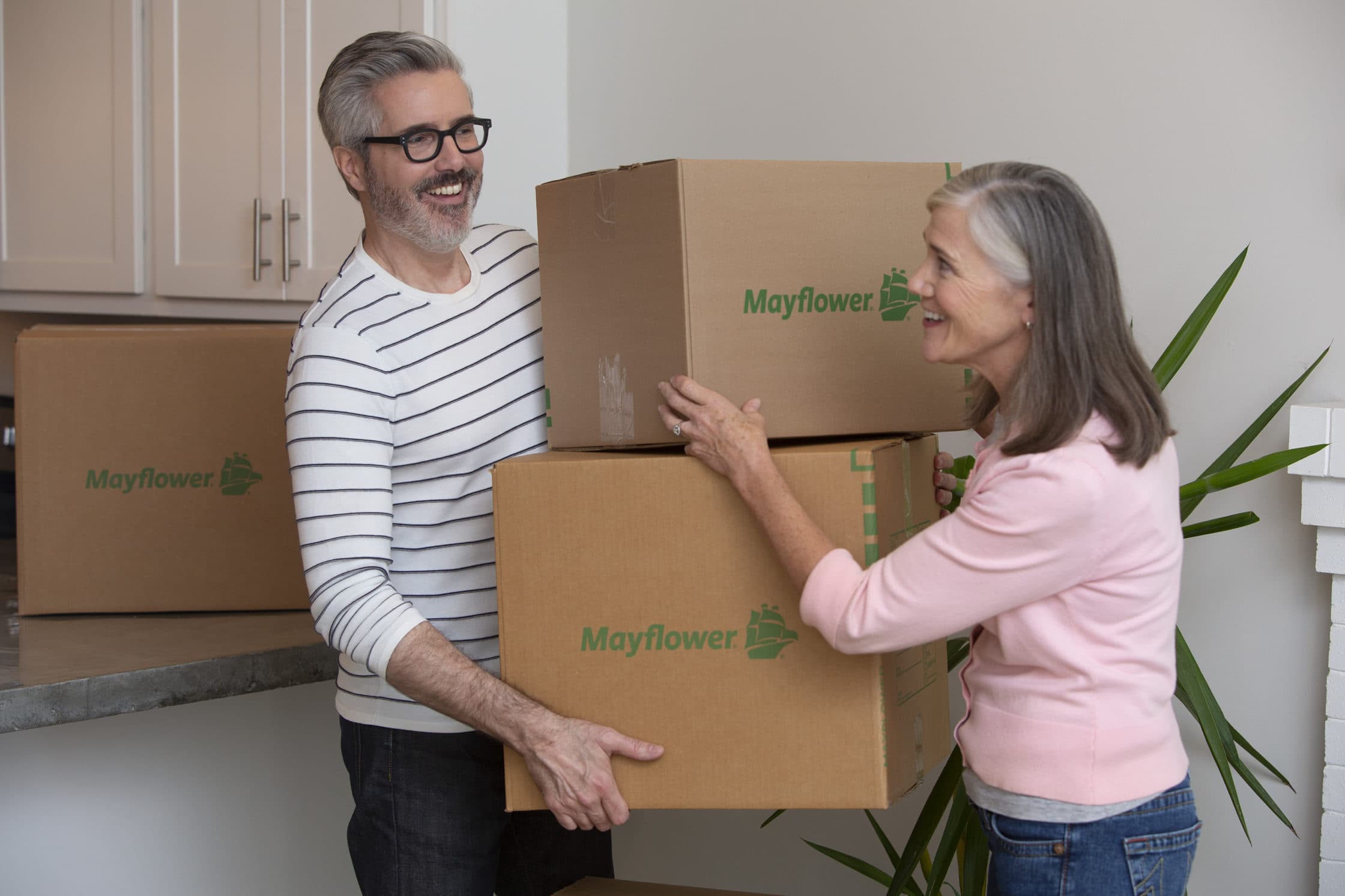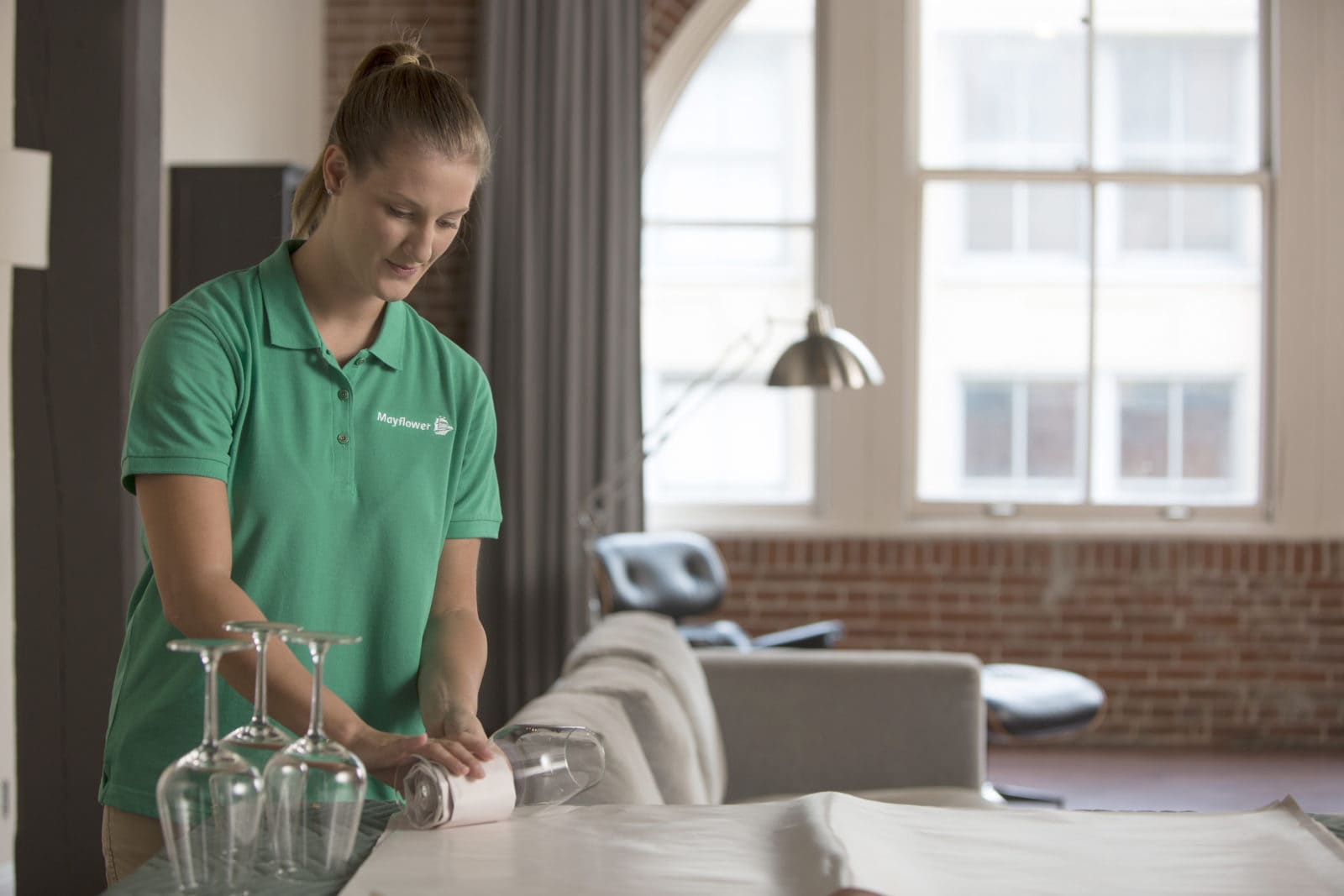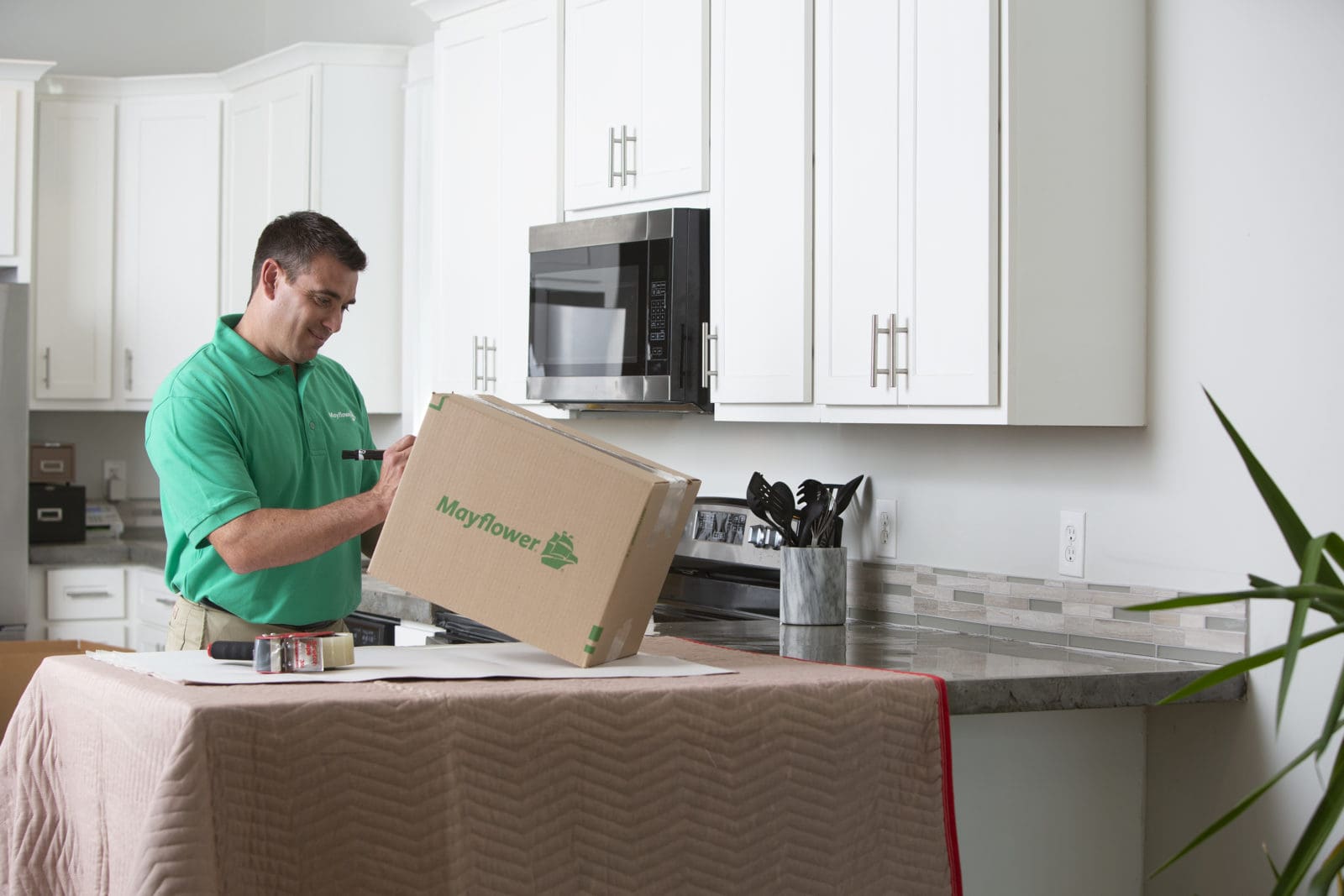Getting ready to move? Mayflower saves you time and money with our essential packing tips and 13-step moving and packing guide. Get started packing like the professionals!
We’ve also included a downloadable printable checklist that can be used anywhere. This comprehensive checklist is key to ensuring a stress-free moving experience.
How to Pack for Your Next Move
- Start by packing out-of-season items and things you use infrequently.
- Empty dresser drawers of breakables, perishables and prohibited items.
- Isolate and protect dangerous items like knives or skewers that might puncture or damage other items (or movers).
- Keep all pairs and components together. Place small hardware items in plastic bags and tape them securely to the equipment.
- Wind electrical cords, fastening them so they do not dangle.
- Wrap fine china, crystal and delicate items individually in clean, unprinted paper; you can also use tissue paper, towels or facial tissue.
- Place a two-or three-inch layer of crushed paper in the bottom of every carton for cushioning. As each layer is completed, fill in empty spaces firmly with crushed paper.
- As you fill smaller boxes with delicate items, consolidate them into a single large box, filling in spaces with crushed paper.
- Avoid overloading cartons but strive for a firm pack that will prevent items from shifting. The cover should close easily without force but should not bend inward.
- Seal cartons tightly with tape except for those containing items listed on Mayflower’s High-Value Inventory Form. These must be left open for your Mayflower mover’s inspection.
- As you finish with each carton, list the contents on the side of the carton; keep a master list somewhere safe. You might want to number and/or code the cartons as well. (It’s important to note that Mayflower will not accept a claim if an item isn’t listed on the Inventory Form, regardless if it has been listed on your box.)
- On the label, assign each box to a room in your new home.
- Tape signs on the door of each room at your destination so movers can get the cartons into your designated room.
Packing Tips for Beginners
Master the art of packing by following these general packing tips to improve efficiency:
- Start by packing the things you aren’t using and won’t need until after you move. (Think camping equipment, sporting equipment and out-of-season items).
- Work backwards from least to most needed so that your everyday necessities won’t need to be packed until right before moving day.
- Your soft and lightweight goods in drawers need not be removed and packed in boxes; they can be moved as they are. Your movers will wrap dressers with plastic and/or blankets to keep drawers closed.
- Any goods that are breakable or that may damage other items should be removed from your drawers prior to moving.
For additional ideas and tips about how to pack for moving, see:
- Moving supplies checklist
- Move in checklist
- Packing tips for clothes
- Packing tips for computer electronics
Professional Packing Tips
As America’s most trusted mover, Mayflower has put together a list of necessary moving supplies to help you simplify the packing process. We also realize that certain items can be trickier to pack than others, so we’ve created instructional videos along with tips and tricks on how to pack some of your more challenging items.
Interested in professional moving help with your upcoming move? Mayflower offers moving services customized to meet your needs and ease the burden of moving any distance, long or short.
How to Pack a Standard Box to Minimize Damage
Keep these steps in mind when packing your boxes to best protect your goods on your next move:
- Before adding items to your empty box, create a two to three-inch layer of padding at the bottom with crushed news wrap.
- Place the heaviest items on the bottom of the box, then build up in layers with medium weight items in the middle and lightest weight items on top.
- Each layer should be filled with crumpled news wrap or other packing materials to eliminate empty spaces.
- You may further define layers by using sheets of cardboard for dividers.
- Everything should be completely covered by paper or other padding.
How to Pack Small & Fragile Items in a Box
Packing fragile or small items such as glass vases or fine china requires special care compared to everyday goods. Be sure to do the following:
- Small and fragile items should be individually wrapped. The more delicate the item, the more padding required.
- They can then be packed separately in small boxes, either one item per box, or a few together in each box.
- Ensure these boxes are fully cushioned with paper or other packing materials.
- These smaller boxes can then be placed in a larger box, with each small box cushioned by additional news wrap to fill the gaps between boxes.
Packing Electrical Equipment & Multi-Piece Equipment Tips
- Group parts and pairs together. Put hardware in plastic bags and tape them securely to the articles with which they belong.
- Wind and fasten electrical cords so they are not left dangling.





